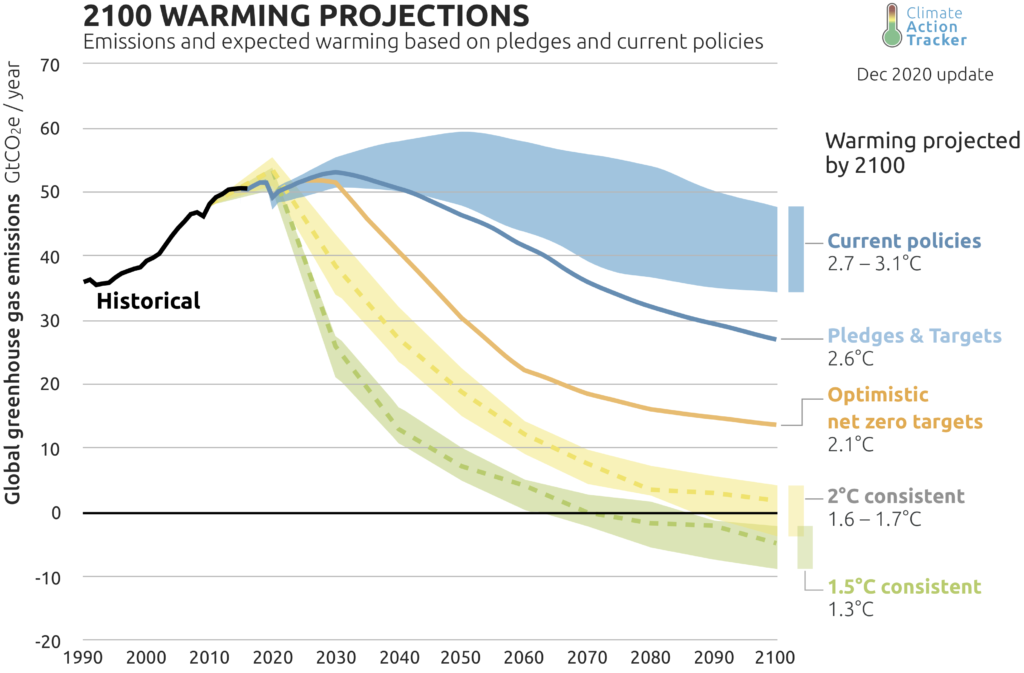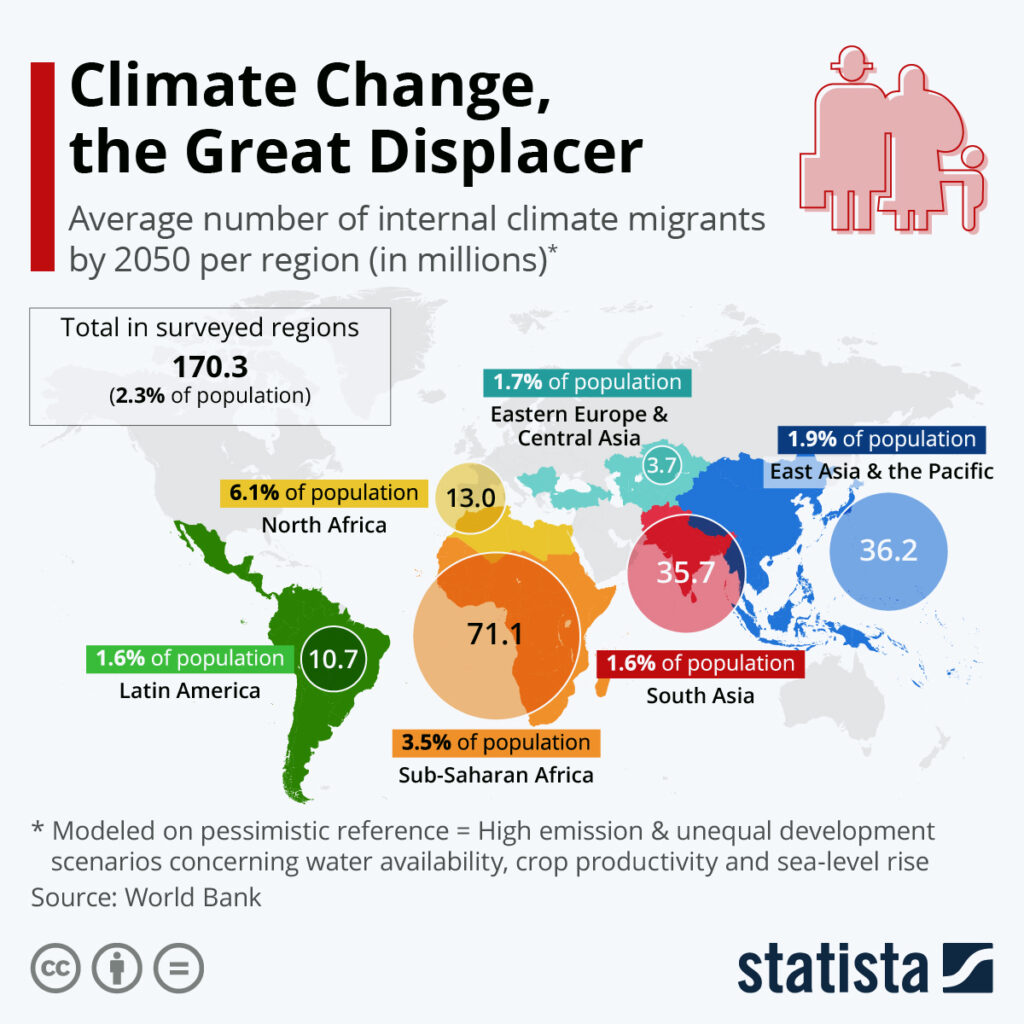COP27: The Cost of Failing To Meet the Paris Agreement
Source: Zurich Insurance
21 November 2022 – by Eric Koons
Climate change’s economic, social and environmental costs are well known – particularly if we fail to meet the Paris Agreement. However, a lot of the developed world still lacks the urgency to take action to prevent these impacts. For example, the world is far behind the climate targets established at previous COP meetings, like failing to meet the promised USD 100 billion annual financing for developing countries.
In the same vein, one serious consideration at UN Climate Change Conference, COP27 2022, is preventing countries from backtracking on the climate pledges they have already made. For example, all countries that attended COP26 Glasgow agreed to set tougher climate targets in 2022, yet only 30 did. While there is still time for governments to meet this commitment, it does not seem likely in a year with growing inflation and an ongoing energy crisis.
These ongoing shortcomings pose an existential threat to the goals outlined in the Paris Agreement.
Climate Change: Paris Agreement Goals
At COP21 in 2015, 194 parties signed the Paris Agreement, which aimed to limit global temperature rise to 1.5° Celsius. Meeting this goal would limit the worst impacts of climate change – but it wouldn’t prevent the impacts altogether.
Now, we already see climate change creating devastation worldwide. Meanwhile, the Paris Agreement goal is starting to seem out of reach. The UN recently stated that the current climate targets aren’t enough to meet the 1.5° Celsius target.

Additionally, this year, the world saw some of the most damaging storms, the hottest days and the most significant flooding on record. The economic cost of each climate disaster alone is staggering, particularly for developing countries. For example, the recent flooding in Pakistan involved losses of up to USD 40 billion, over 10% of the country’s GDP.
COP27 Egypt and Financing Climate Resiliency
As a result, establishing climate financing is critical for COP27 (27th session of the Conference of the Parties). Loss and damage, adaptation and mitigation are all necessary funding categories. While this is the first time loss and damage has become a focal point for discussions at a COP meeting, adaptation and mitigation are reoccurring themes. Combined, they form a robust strategy for limiting future emissions, adapting to changing climate and supporting countries that will bear the brunt of the inevitable climate change impacts.
A failure to agree on solid policies in each of these categories at COP27 will raise additional concerns about the commitment of developed countries to reaching climate change targets.
Climate Future and Economic Consequences
Limiting climate change and global warming to 1.5° Celsius is necessary. However, financing appears nearly out of reach. While at COP27, some developed countries made pledges to fund the developing world, the vast majority have not. Funding from individual countries is not enough to make the needed change. It requires investments and funding mechanisms from a unified public and private sector.
Additionally, the reluctance of most member nations to make new pledges in the face of the energy crisis and global inflation erodes the credibility of national targets. The issue is further complicated as we need cheap, abundant energy for future economies and the growing global population. Without financial backing for the energy transition, it will be challenging to have a low-carbon grid for this growing demand.
Current Climate Impacts in Asia
The actual financial impact of future climate impacts is extremely challenging to calculate. However, current effects are easier to determine, and the results look bleak. The State of the Climate in Asia 2021 report released by the World Meteorological Organization found that in 2021, weather and water-related hazards in Asia caused USD 35.6 billion in losses and affected 50 million people.

Additionally, every year, these values are increasing. Between 2001 and 2020, economic damage in Asia from droughts increased by 63%, floods by 23% and landslides by 147%. These trends show the growing impact that climate change has on the environment, and this trend will continue, even if we achieve the Paris Agreement’s climate targets.
Not Meeting Paris Agreement Targets
If we fail to meet the targets in the Paris Agreement, runaway climate change is a genuine concern.
If the world warms by 2° Celsius, 99% of the world’s coral reefs will die. Currently, 1 billion people around the world benefit directly or indirectly from coral reefs. Not only do coral reefs provide food, but they also absorb 97% of wave energy, protecting coastal communities.
Additionally, the world will continue to see stronger storms, heatwaves, floods and droughts. This will put in jeopardy the livelihood of communities around the world. For example, even an increase of 1.1° Celsius will likely lead to 50% of the global population living with water insecurity for at least one month every year.

These impacts will have devastating effects on a global scale. Local economies will struggle to adapt, global supply chains will fail and climate refugees will become increasingly more common. Meanwhile, one study found that exceeding 1.5° Celsius could cost the world USD 600 trillion by 2100.
Looking to the Future Beyond COP27 2022
In the face of ever-increasing climate impacts, wavering energy security and an increasingly profitable fossil fuel industry, the world needs to keep pushing forward to limit the worst impacts of climate change. While COP27 is a significant milestone in the world’s roadmap towards a climate-resilient future, it is only one piece. It falls on the shoulders of every country, and business, to follow through on the pledges set at each COP meeting. Every player must do their part to reach the Paris Agreement’s targets.
Looking ahead, the next decade will be a pivotal moment in the progress towards reducing global emissions and facilitating the transition to renewable energy. We must start now, as energy infrastructure and resilient economies take time to develop.
The world’s future is in our hands. It is time to accept responsibility and take decisive action against climate change.
by Eric Koons
Eric is a passionate environmental advocate that believes renewable energy is a key piece in meeting the world’s growing energy demands. He received an environmental science degree from the University of California and has worked to promote environmentally and socially sustainable practices since. Eric’s expertise extends across the environmental field, yet he maintains a strong focus on renewable energy. His work has been featured by leading environmental organizations, such as World Resources Institute and Hitachi ABB Power Grids.
Read more

